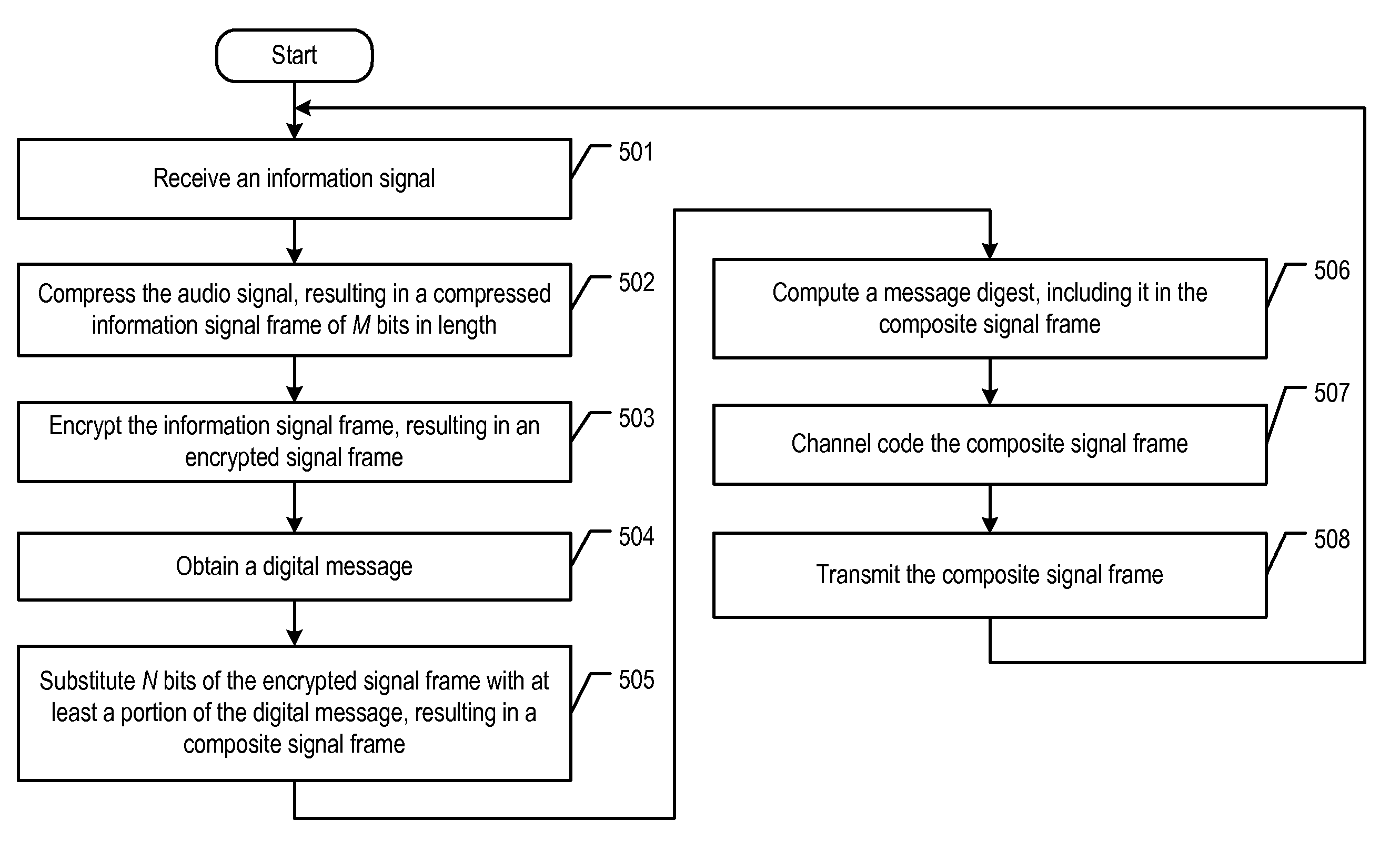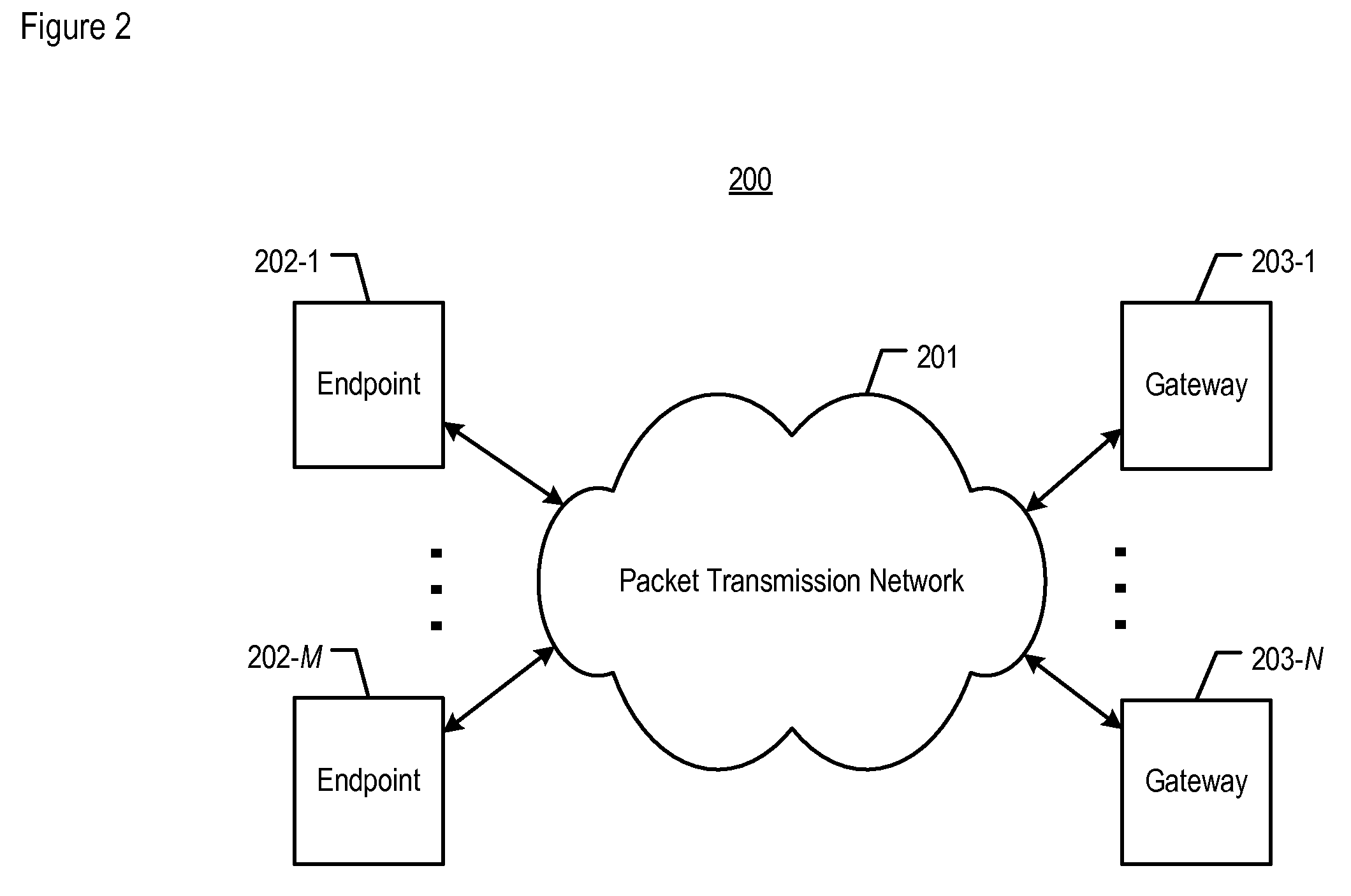Signal watermarking in the presence of encryption
a technology of encryption and signature, applied in the field of telecommunications, can solve the problems of large processing time, drawbacks of this protocol, and endpoints being vulnerable to many of the same or similar packet attacks, and achieve the effect of enabling or enhancing packet authentication
- Summary
- Abstract
- Description
- Claims
- Application Information
AI Technical Summary
Benefits of technology
Problems solved by technology
Method used
Image
Examples
Embodiment Construction
[0018]FIG. 2 depicts a schematic diagram of telecommunications system 200, in accordance with the illustrative embodiment of the present invention. System 200 routes voice conversations, or other types of media information signals such as video and other types of audio (e.g., music, etc.), between network elements such as telecommunications endpoints. System 200 comprises: packet transmission network 201; telecommunications endpoints 202-1 through 202-M; and gateways 203-1 through 203-N, wherein M and N are positive integers. All of the elements depicted in FIG. 2 are interconnected as shown.
[0019]Packet transmission network 201 is used to transport one or more types of media, such as Voice over Internet Protocol (or “VoIP”), for the subscribers of a service provider. Network 201 comprises one or more transmission-related nodes such as routers that are used to direct data packets that carry processed information signals (e.g., voice packets, etc.) from one or more sources to the cor...
PUM
 Login to View More
Login to View More Abstract
Description
Claims
Application Information
 Login to View More
Login to View More - R&D
- Intellectual Property
- Life Sciences
- Materials
- Tech Scout
- Unparalleled Data Quality
- Higher Quality Content
- 60% Fewer Hallucinations
Browse by: Latest US Patents, China's latest patents, Technical Efficacy Thesaurus, Application Domain, Technology Topic, Popular Technical Reports.
© 2025 PatSnap. All rights reserved.Legal|Privacy policy|Modern Slavery Act Transparency Statement|Sitemap|About US| Contact US: help@patsnap.com



